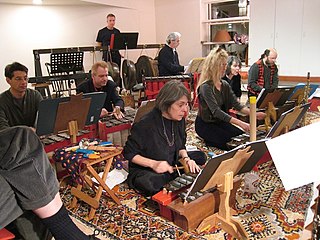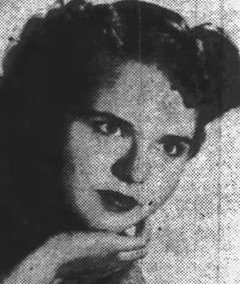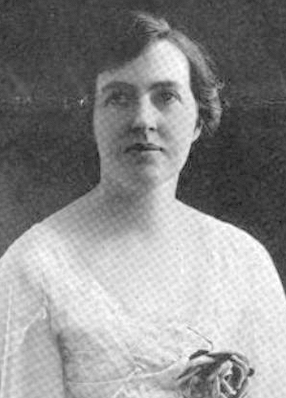Related Research Articles

Darius Milhaud was a French composer, conductor, and teacher. He was a member of Les Six—also known as The Group of Six—and one of the most prolific composers of the 20th century. His compositions are influenced by jazz and Brazilian music and make extensive use of polytonality. Milhaud is considered one of the key modernist composers. A renowned teacher, he taught many future jazz and classical composers, including Burt Bacharach, Dave Brubeck, Philip Glass, Steve Reich, Karlheinz Stockhausen and Iannis Xenakis among others.

American gamelan could refer to both instruments and music; the term has been used to refer to gamelan-style instruments built by Americans, as well as to music written by American composers to be played on gamelan instruments. American gamelan music usually has some relationship to the gamelan traditions of Indonesia, as found primarily on the islands of Java and Bali in a variety of styles. Many American compositions can be played on Indonesian or American-made instruments. Indonesian gamelan can be made of a variety of materials, including bronze, iron, or bamboo. American gamelan builders used all sorts of materials including aluminum, tin cans, car hubcaps, steel, antique milk-strainers, etc. American gamelan may also describe the original music of American ensembles working with traditional instruments.

The San Francisco Conservatory of Music (SFCM) is a private music conservatory in San Francisco, California, United States. As of 2021, it had 480 students.
Robert M. Greenberg is an American composer, pianist, and musicologist who was born in Brooklyn, New York. He has composed more than 50 works for a variety of instruments and voices, and has recorded a number of lecture series on music history and music appreciation for The Great Courses.
Alden Jenks is an American composer.

Luciano Chessa is a musician, performance/visual/installation artist, and musicologist.

David Van Kriedt was a composer, saxophonist and music teacher.
Gerald M. Shapiro is an American composer of acoustic and electronic music.

Andrew William Cadima is an American composer and painter.
Alexander Libermann (1896–1978) was a Bay Area-based pianist and educator who taught piano at Mills College.
Albert Israel Elkus was an American composer, pianist, and educator.
Jonathan Elkus is an American composer, arranger, editor, author, conductor, and teacher.
Howard Rengstorff Brubeck was a composer and music educator and the older brother of jazz pianist Dave Brubeck. His best known work, Dialogues for Jazz Combo and Orchestra, premiered at Carnegie Hall December 10, 1959, with the Dave Brubeck Quartet and Leonard Bernstein conducting the New York Philharmonic and was recorded on Bernstein Plays Brubeck Plays Bernstein in 1961. His California Suite, also from the 1950s, was performed in San Francisco and in Brussels. According to the Grove Dictionary of Music, "The influence of Milhaud – and sometimes echoes of Copland – can be heard in his music; a flair for orchestral writing, secure craftsmanship and sophisticated wit are also in evidence." He wrote liner notes for many of his brother's commercial recordings, and transcribed, edited, and arranged much of his brother's music for publication.
Richard James Felciano is an American composer.

Samuel Grodin is an American pianist, lecturer and teacher. Grodin's teachers have included Nina Scolnik, Julian Martin, Robert McDonald, Antoinette Perry, Marc Durand, Joseph Kalichstein, Sharon Mann, Craig Richey, and Lucinda Carver. Grodin has worked with Emanuel Ax, Blanca Uribe, Dominique Weber, and Stephen Hough in master classes. He teaches piano at California State University, Long Beach.
David Ross Garner is an American composer of opera and vocal, instrumental, and chamber music. He is also an educator, on faculty at the San Francisco Conservatory of Music.

Xenia Boodberg Lee was an American concert pianist, based in the San Francisco Bay Area.

Ada Clement was an American pianist and music teacher. She co-founded what would become the San Francisco Conservatory of Music.
Regina Kastberg Hansen Willman was an American composer, born in Burns, Wyoming. She married Allan Arthur Willman in 1942; they divorced in 1956, but remained close throughout her life. Willman received a B.M. from the University of Wyoming in 1945, and a M.M. from the University of New Mexico in 1961. She studied with Darius Milhaud at Mills College, Roy Harris at Colorado College, and pursued further studies at the University of California, Berkeley, the Juilliard School, the Sorbonne, and the Lausanne Conservatory. Willman was the resident composer of the Helene Wurlitzer Foundation in Taos, New Mexico, from 1956–57 and 1960-61. Her papers are archived at the University of Wyoming.
Katharine Mulky Warne was an American composer, pianist and teacher, who founded the Darius Milhaud Society and organized 15 Milhaud festivals in Cleveland, Ohio, to promote his music. She was born in Oklahoma City, Oklahoma. On June 27, 1953, She married Clinton L. Warne and they had three children: Kate, Clinton Jr. and Carolyn.
References
- ↑ "Chapter 1". my.sfcm.edu. Retrieved October 9, 2015.
- ↑ "Inventory of the Compositions of Elinor Armer, 1955–1995" . Retrieved October 12, 2010.
- ↑ Pendle, Karin (1997). American Women Composers, Volume 16, Parts 1-2. Psychology Press. ISBN 9789057021459 . Retrieved November 11, 2010.
- ↑ "Elinor Armer - Davis - LocalWiki". localwiki.org. Retrieved October 9, 2015.
- ↑ "Cheryl North Interviews Elinor Armer".
- 1 2 3 "Elinor Armer". elinorarmer.com. Retrieved October 9, 2015.
- 1 2 "Elinor Armer". Archived from the original on August 24, 2010. Retrieved October 12, 2010.
- ↑ http://my.sfcm.edu/web/sfcm/elinor-armer/chapter-2 [ dead link ]